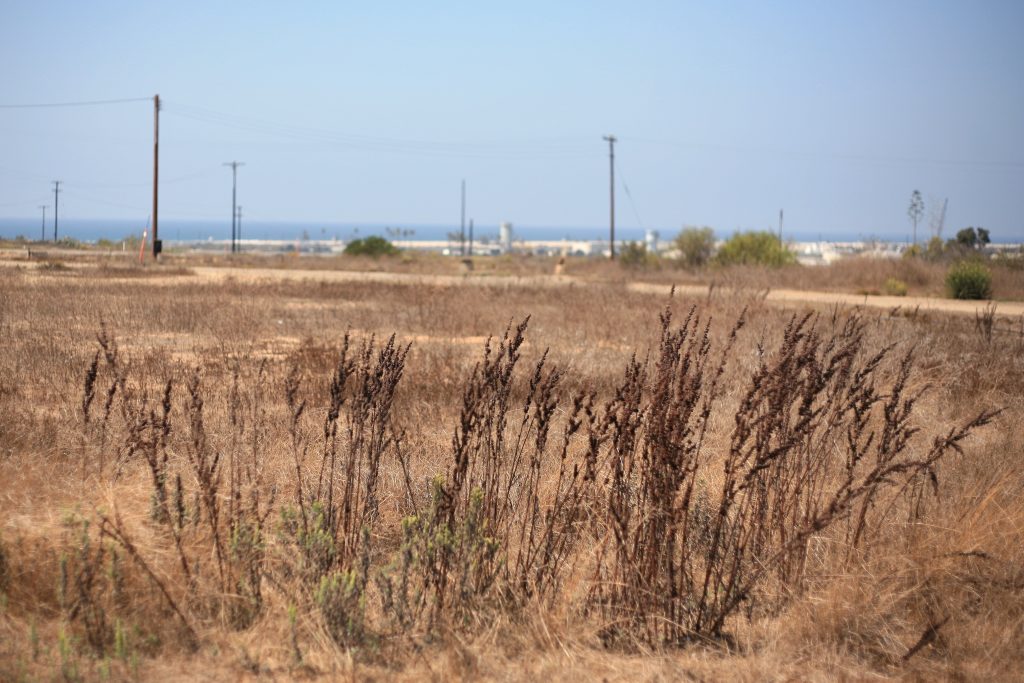
— Photo by Sara Hall ©
Before the controversial mixed-use Banning Ranch project was denied by the California Coastal Commission in September, it had been approved by the city of Newport Beach in 2012. This prompted a lawsuit by the Banning Ranch Conservancy about whether or not the city did their due diligence or even complied with the law.
At the time the city approved Banning Ranch, the development included 1,375 residential units. On Sept. 7, commissioners voted 9-1 to deny the proposal, which by then included 895 residential units, 45,100 square feet of commercial use, a 75-room resort and 20-bed hostel, 329-acre nature preserve, and more on a 401-acre site in the 5100 block of West Coast Highway.
Oral arguments by both sides were heard Wednesday by California Supreme Court in an effort to answer the question of whether or not the city adequately and appropriately “worked with” and “coordinated with” CCC staff consistent with the general plan to identify habits for preservation, restoration, or development prior to the city’s project approval.
The court also asked whether the city was required to identify environmentally sensitive habitat areas – as defined in the California Coastal Act of 1976 – in the environmental impact report for the project?
According to Irvine-based attorney John McClendon, arguing for the Banning Ranch Conservancy, the city failed on both counts. They did not work collaboratively, he concluded.
“They should have worked with the Coastal Commission staff,” McClendon said.
McClendon pointed out that the CCC staff actually set it up for the city to provide what they found as probable ESHA, to get the Coastal Commission in the “ballpark,” and that the CCC would “polish and refine” it, he said.
“Instead, the city acted ostrich-like,” McClendon said.
The degree of “working with” has to be sufficient enough to at least accomplish the purpose of the mitigation measures. If it’s done “after the horse has left the barn” or temporally the project is approved, that doesn’t put the public in the process, McClendon argued. The mitigation measures should be an integral part of the plan, not an afterthought, he said.
Newport Beach “punted” the ESHA ball down the road to the Coastal Commission. Justices questioned whether or not that was appropriate. When to punt and how to punt are two different questions, said Justice Mariano-Florentino Cuéllar.
“The Coastal Commissioners are not the high priests of ESHA,” McClendon said.
There’s no mystery or magic in determining ESHA, it’s science-based, he said. The city should have adequately addressed the probable sensitive areas, he said.
Areas of possible EHSA were included in the metadata of a map, McClendon clarified, but not in the printed documents. It would pop up in the computer software when ESHA was specifically typed in, he explained.
It needs to be in print, not in the shadows, Justice Goodwin Liu said.
On the other side of the issue, on behalf of the city Whitman Manley from Sacramento, and for the real parties in interest Benjamin Shatz from Los Angeles, argued that the city did work with the Coastal Commission.
“Work is a rather open-ended term,” Manley said.
The question of whether they have “worked with” the CCC is very vague, Shatz added.
The record indicates there was at least one meeting, although there may have been more, and one site visit, Manley noted. They also had conversations with Coastal staff, as indicated in direction city staff gave to their consultant, he added.
“That’s all work,” Manley said of the city’s cooperation with the CCC. “It may be work with a lower case ‘w’ but it is work.”
The city made a reasonable effort, he added.
“There was some effort. Could there have been more effort? Could there have been more phone calls? Of Course. We could say that on any record,” Manley said. “But the point here is that there was some effort.”
Manley also pointed out that the work did not end with the city’s certification of the EIR and the city’s approval of the project, as the Conservancy believes.
Chief Justice Tani Cantil-Sakauye questioned whether work with a lowercase ‘w’ undermines the EIR.
“It’s penny wise, pound foolish for a city potentially to lowercase ‘w’ work with an agency, but by virtue of that not actually address the requirements of CEQA” she said.
They feel they fully complied with the requirements of CEQA, Manley responded.
Determination of ESHA is made by the CCC in the context of a coastal development permit. It is not a specific type of habitat that can be determined by any agency.
“ESHA is not a cookbook,” Manley said, “ESHA is a policy determination made on a site-specific basis by the Coastal Commission.”




